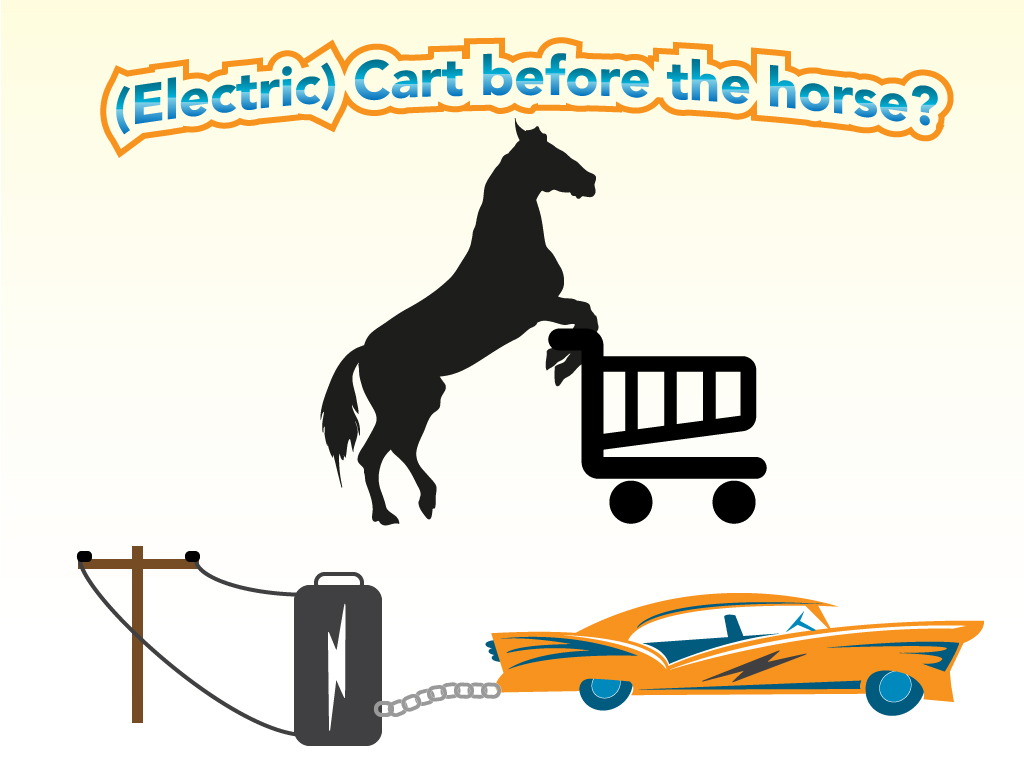
You may or may not have heard the saying, cart before the horse. One saying which may become similar in the coming years is the electric car before the electricity, battery, or infrastructure. I know it is a mouth full to say this saying, but unfortunately, we are heading this way with the push for electric vehicles. I’m not here to tell you what the right answer is, but these are the facts in which I have found.
Can the current infrastructure handle an electric car charging? Yes, it can in some areas but not all.
Can it handle 5 or 10 electric vehicles charging in the same neighborhood at the same time?
What about the long-term and short-term effects of lithium-ion batteries? Many people fail to realize what it takes to produce these batteries and the environmental hazards which come along with it. According to the Institute for Energy Research,
“The lithium extraction process uses a lot of water—approximately 500,000 gallons per metric ton of lithium. To extract lithium, miners drill a hole in salt flats and pump salty, mineral-rich brine to the surface. After several months the water evaporates, leaving a mixture of manganese, potassium, borax and lithium salts which is then filtered and placed into another evaporation pool. After between 12 and 18 months of this process, the mixture is filtered sufficiently that lithium carbonate can be extracted.”
In fact, the extraction of lithium actually contaminates the air and soil. Lithium is destroying the environment as far as 150 miles from where it is processed. The extraction is destroying farms, killing animals, and causing a quiet havoc on Earth.
Doesn’t oil fracking do the same? Oil isn’t innocent either. We have seen in the past oil spills and the environmental impact it has caused. The question is, which is the lesser evil?
According to the Wall Street Journal,
“A study by the IFO think tank in Munich found that a popular electric car releases more carbon dioxide into the atmosphere than a comparable diesel engine. The authors compared CO2 output for a Tesla Model 3 and a Mercedes C220d sedan. They calculated that the diesel Mercedes releases about 141 grams of carbon dioxide per kilometer driven, including the carbon emitted to drill, refine and transport its fuel. The Tesla? Between 156 and 181 grams.”
The U.S. currently is dependent on foreign oil, the lithium gold rush doesn’t change the dependency any other than the fact of what country the U.S. will be dependent. The world’s biggest owner of the largest lithium reserve is China even though the reserves are found in Australia and South America. China is currently “winning” the lithium gold rush which is not going to slow down.
The question is, are electric lithium-ion powered cars the answer to battle climate change? Or are they going to simply make it worse?
Are we really helping the environment by pushing for electric cars?
I for one think other alternatives need to still be worked on and developed, but I am only one person. The all-mighty dollar will continue to push both options along for the time being, but the truth is, we are not winning the fight against global warming and a never-ending energy crisis. It just depends on which energy you are a fan of most at this point.
What are your thoughts? Leave a comment below to keep the conversation going.

